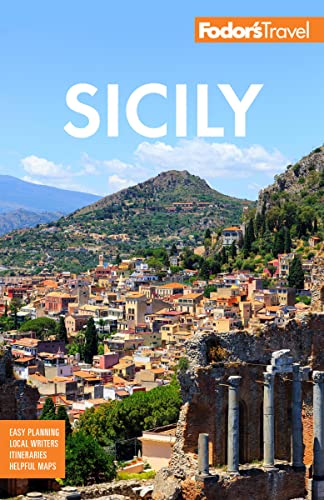Palermo and western Sicily have a character very distinct from Sicily’s other regions, a difference attributable to its strong North African imprint deriving from the former sway of Carthaginian and Arab cultures. You can detect this influence in every way, from the white-cube buildings prolific on the west coast and islands to the cuisine that features couscous and sweet elements such as raisins.
The stamp of other cultures is very much in evidence, too, not least in Palermo where the synthesis of Greek, Jewish, Arab, and Norman is evident in the great monuments and churches of Palermo and Monreale, embellished by some of the most beautiful mosaics and calligraphic designs to be found anywhere in Europe. The red domes of Palermo’s churches of San Cataldo and San Giovanni degli Eremiti would not look out of place in Tunis, nor would the glittering mosaics appear unusual in Constantinople or Ravenna. Palermo also has some of Italy’s grandest examples of Baroque architecture, but you can find much humbler and more engaging Baroque artistry hidden away in the private oratories adorned with the sculptures of the master of stucco, Giacomo Serpotta, and in the playful statuary of Bagheria’s Villa Palagonia.
Outside Palermo, Sicily’s Greek heritage is showcased in the temple at Segesta—one of the finest Greek temples anywhere—while Greek, Carthaginian, and Roman traces can be found on Mozia island. As for the Norman presence, this is evident throughout the west, from the ruined castles and bastions of such towns and villages as Castellammare del Golfo and Caltabellotta to the stark, medieval flavor of hilltop Erice.
There’s a rougher and rawer style to the western landscape, too, which you can experience in the wilderness of the Riserva dello Zingaro nature reserve on the Golfo di Castellammare. Ustica island and the Egadi Islands have something of this untrammeled flavor, too, with human settlement confined to small huddles of dwellings and the rest given over to barren rock and scrubland. The pristine waters here are popular with snorkelers and divers.
Urban culture is very much in evidence in the west-coast towns of Trapani and Marsala, in both of which you’ll find elegant architecture and bustling evening promenades. Holiday crowds predominate in the region’s premier beach resort, San Vito Lo Capo, on the northwestern tip of the island, though in winter you’ll find little movement of any kind here.
In the less populated interior, towns and villages are few and far between. It's worth the trek into the rolling countryside south of Palermo to wander the streets of Corleone, a provincial center that once had dark associations with organized crime and now holds a compelling exhibition that graphically tells the story of Sicily's Cosa Nostra.




